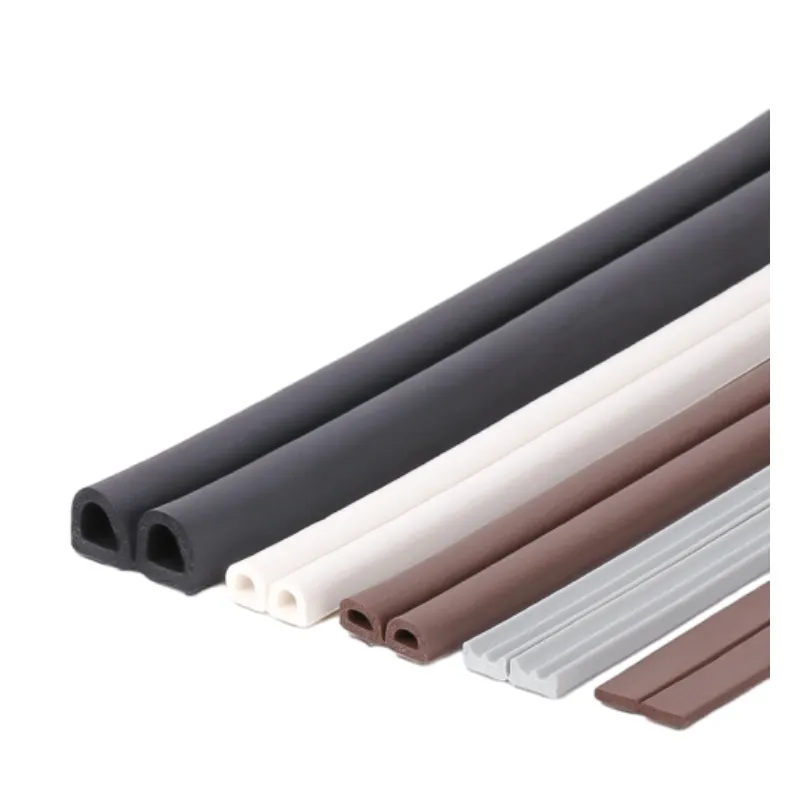Car Door Seals for Enhanced Durability and Weather Protection Solutions
The Importance of Car Door Rubber Seals in Automotive Design
Car door rubber seals, often overlooked yet crucial components of automotive design, play a pivotal role in ensuring vehicle integrity, comfort, and safety. These seals, typically made from durable rubber or synthetic materials, are designed to fit snugly between the car door and the body of the vehicle. They serve multiple functions that contribute to the overall performance and longevity of a car.
One of the primary functions of car door rubber seals is to provide weatherproofing. These seals form a barrier against rain, wind, and dust, preventing water and debris from entering the vehicle’s interior. A well-sealed door means that drivers and passengers remain dry and comfortable, even in adverse weather conditions. Moreover, effective rubber seals help protect the vehicle’s interior from rust and mold, which can lead to costly repairs and diminish the car’s lifespan.
In addition to weatherproofing, car door rubber seals aid in noise insulation. When driving, external noises, such as wind and road sounds, can significantly detract from the driving experience. High-quality rubber seals help to dampen these sounds, providing a quieter cabin environment. This is particularly important for luxury vehicles, where a serene atmosphere is part of the overall appeal. As car manufacturers strive to create quieter, more refined vehicles, the role of rubber seals in soundproofing has become increasingly significant.
Safety is another crucial aspect that rubber seals contribute to. Properly functioning door seals ensure that doors close securely and stay shut while the vehicle is in motion. This integrity prevents accidents caused by doors accidentally opening during driving. Furthermore, rubber seals help maintain a consistent air pressure inside the vehicle, which is essential for the proper functioning of airbag systems in case of an accident.
car door rubber

Another vital factor is thermal insulation. Car door rubber seals help regulate the temperature inside the vehicle by preventing outside heat or cold from infiltrating the interior. This function contributes to a more comfortable driving experience, allowing for efficient climate control. When the cabin can maintain a consistent temperature, it not only enhances comfort but also improves the efficiency of the car’s heating and cooling systems, ultimately leading to better fuel economy.
Over time, however, rubber seals can deteriorate due to exposure to UV rays, extreme temperatures, and environmental pollutants. When seals become worn or damaged, it is crucial to replace them promptly. Signs of wear may include cracking, hardening, or loss of flexibility. Regular maintenance and inspection of car door rubber seals are necessary to ensure their functionality. Failure to address worn seals can lead to more significant issues, such as water leaks, unwanted noise intrusion, and increased wear on the vehicle’s interior.
In the face of emerging trends in the automotive industry, such as electric vehicles (EVs) and advancements in smart technology, the role of rubber seals is evolving. Manufacturers are exploring new materials and designs that enhance the performance of these seals while keeping up with environmental standards. Innovations in synthetic rubber and eco-friendly materials indicate a promising future for the development of car door seals that are both high-performing and sustainable.
In conclusion, car door rubber seals may be small components, but their impact on the overall performance and comfort of a vehicle is substantial. They provide weatherproofing, noise insulation, safety, and thermal regulation, all of which contribute to a pleasant driving experience. Regular maintenance and timely replacement of these seals are essential to keep a vehicle in optimal condition. With ongoing advancements in materials and technology, the future of car door rubber seals looks bright, promising vehicles that are increasingly resilient and environmentally friendly.
-
Under Door Draught Stopper: Essential ProtectionNewsJul.31,2025
-
Garage Door Seal and Weatherstrips for ProtectionNewsJul.31,2025
-
Edge Banding Tape for Perfect EdgesNewsJul.31,2025
-
Table Corner Guards and Wall Corner ProtectorsNewsJul.31,2025
-
Stair Nose Edging Trim and Tile Stair SolutionsNewsJul.31,2025
-
Truck Bed Rubber Mats for Pickup BedsNewsJul.31,2025
-
Window Weather Stripping for Noise ReductionNewsJul.29,2025